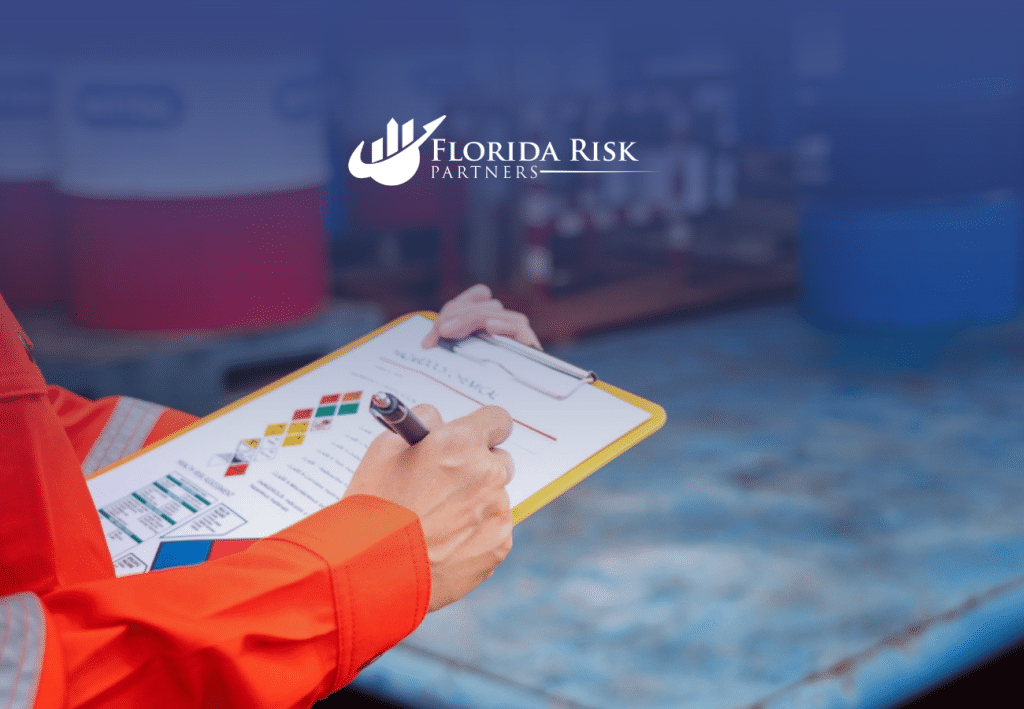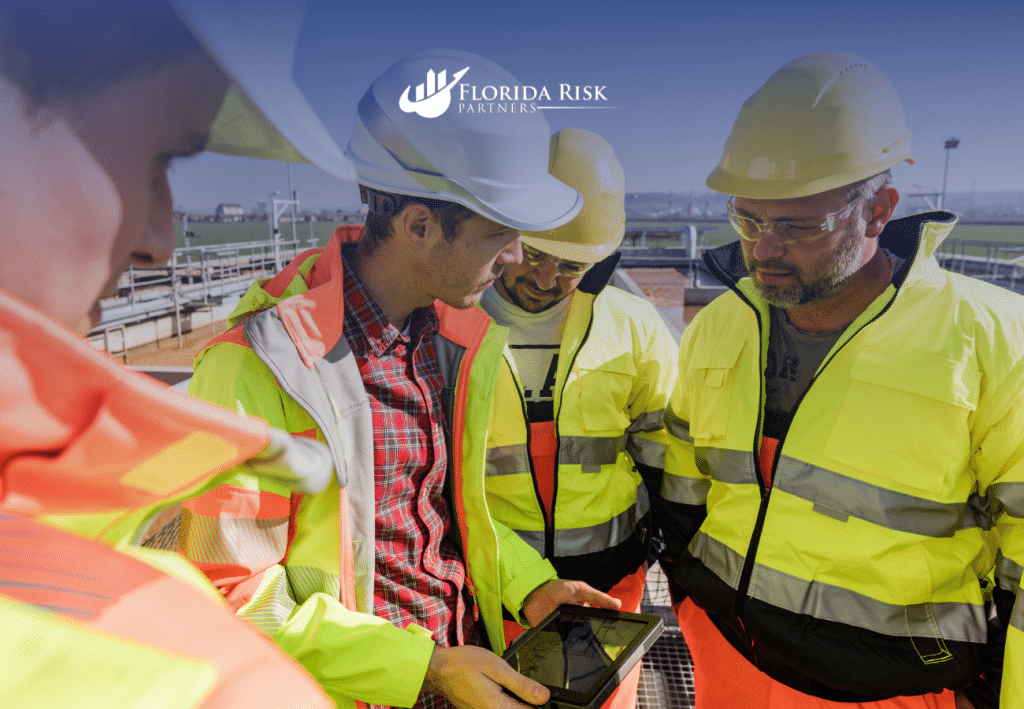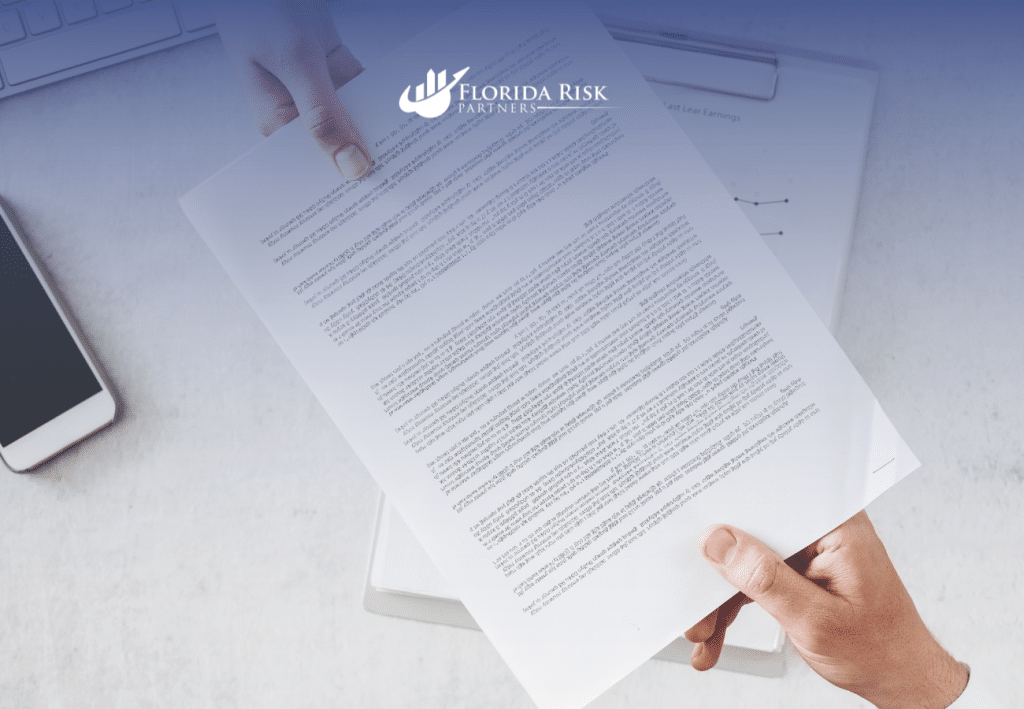-
Main Office: 1434 E. Bloomingdale Ave Valrico, FL 33596-6110
-
Phone: (888) 601-6660
-
Email: info@floridariskpartners.com

In the world of workplace safety, prevention is always better than cure. Companies striving to create a safe and healthy work environment must start with a fundamental practice: risk assessments and hazard identification. These two components are the bedrock of any effective safety program and are crucial in preventing workplace injuries and accidents.
This blog post will explore what risk assessments and hazard identification entail, why they are essential, and how to implement them effectively in your organization.
What is a Risk Assessment?
At its core, a risk assessment is a systematic process used to identify potential hazards in the workplace and evaluate the risks associated with them. This process helps organizations understand the likelihood and severity of these risks, allowing them to take proactive measures to mitigate or eliminate them.
Risk assessments are not just about identifying immediate dangers but also about anticipating future risks. By examining various factors such as work environment, equipment, job tasks, and employee behaviors, a risk assessment provides a comprehensive view of the safety landscape within an organization.
Why Are Risk Assessments Important?
Risk assessments are crucial for several reasons:
- Prevention of Workplace Injuries: The primary goal of a risk assessment is to prevent accidents and injuries before they occur. By identifying potential hazards and addressing them proactively, companies can significantly reduce the likelihood of workplace incidents.
- Compliance with Regulations: Many industries are governed by strict safety regulations that require regular risk assessments. Conducting thorough risk assessments helps organizations comply with these legal requirements, avoiding penalties and fines.
- Protection of Employees and Resources:
- A safe work environment protects employees from harm and helps preserve organizational resources. Accidents can lead to costly downtime, damage to equipment, and increased workers’ compensation claims. Risk assessments help minimize these risks.
- Enhanced Productivity:
- When employees feel safe at work, they are more likely to be productive. A well-conducted risk assessment fosters a sense of security, leading to a more engaged and focused workforce.
Key Steps in Conducting a Risk Assessment
Conducting a risk assessment involves several critical steps. Each step is essential to ensure that all potential hazards are identified and addressed effectively.

1. Identify Potential Hazards
The first step in any risk assessment is to identify potential hazards in the workplace. Hazards can come in various forms, including:
- Physical Hazards: Such as slips, trips, falls, or exposure to harmful substances.
- Chemical Hazards: Involving chemicals that can cause injury or illness, such as flammable materials, acids, or solvents.
- Biological Hazards: Including bacteria, viruses, and other pathogens that can cause disease.
- Ergonomic Hazards: Related to the design of the workplace, which can lead to musculoskeletal injuries if not properly addressed.
- Psychosocial Hazards: Such as stress, harassment, or violence in the workplace.
To identify these hazards, it’s essential to conduct a thorough inspection of the work environment, review past incident reports, and consult with employees who may be aware of potential dangers that management might overlook.
2. Evaluate the Risks
Once hazards have been identified, the next step is to evaluate the risks associated with each hazard. This involves assessing both the likelihood of the hazard causing harm and the potential severity of the harm.
Risks are typically categorized as:
- High Risk: Where the hazard is likely to cause significant harm, and immediate action is required.
- Medium Risk: Where the hazard could cause harm, but it is less likely or the harm is less severe.
- Low Risk: Where the hazard is unlikely to cause harm, or the potential harm is minimal.
Evaluating risks helps prioritize which hazards need to be addressed first. High-risk hazards should be dealt with immediately, while medium and low-risk hazards should be managed according to their potential impact on safety.
3. Determine Control Measures
After evaluating the risks, the next step is to determine appropriate control measures to mitigate or eliminate the hazards. Control measures can be categorized into several types:
- Elimination: Completely removing the hazard from the workplace. For example, replacing a hazardous chemical with a non-hazardous one.
- Substitution: Replacing the hazard with something less dangerous. For example, using safer equipment that reduces the risk of injury.
- Engineering Controls: Implementing physical changes to the workplace to reduce exposure to hazards. For example, installing ventilation systems to remove harmful fumes.
- Administrative Controls: Changing work procedures or policies to reduce the risk. For example, implementing a rotating shift schedule to reduce worker fatigue.
- Personal Protective Equipment (PPE): Providing employees with protective gear, such as helmets, gloves, or safety glasses, to minimize the risk of injury.
The goal is to implement control measures that are both effective and practical, ensuring that hazards are adequately managed without disrupting workflow.
4. Document and Communicate Findings
Documenting the findings of the risk assessment is crucial for accountability and continuous improvement. A comprehensive risk assessment report should include:
- A list of identified hazards.
- The results of the risk evaluation.
- The control measures implemented.
- Any recommendations for future action.
This documentation should be communicated to all relevant stakeholders, including employees, management, and safety officers. Clear communication ensures that everyone is aware of the hazards and the steps taken to address them.

5. Monitor and Review Regularly
Risk assessments are not a one-time task. Work environments change, new hazards can emerge, and control measures may need to be updated. Therefore, it’s essential to monitor the effectiveness of the implemented control measures and review the risk assessment regularly.
Regular reviews help ensure that the risk assessment remains relevant and effective. They also provide an opportunity to identify any new hazards and implement additional control measures as needed.
The Role of Hazard Identification in Risk Assessments
Hazard identification is an integral part of the risk assessment process. It involves recognizing potential sources of harm in the workplace before they can cause an incident. Effective hazard identification relies on a proactive approach, where safety is constantly monitored and assessed.
Proactive vs. Reactive Hazard Identification
Proactive hazard identification is about anticipating potential hazards before they lead to an accident. This approach involves regular safety inspections, employee training, and the use of safety management systems to identify hazards early.
On the other hand, reactive hazard identification occurs after an incident has already taken place. While it’s essential to investigate the causes of accidents to prevent recurrence, relying solely on reactive measures is not enough. A proactive approach is necessary to create a truly safe work environment.
Tools and Techniques for Hazard Identification
There are various tools and techniques that can be used for hazard identification, including:
- Safety Audits: Regular inspections of the workplace to identify potential hazards.
- Job Safety Analysis (JSA): A step-by-step review of job tasks to identify hazards at each stage.
- Near-Miss Reporting: Encouraging employees to report near-miss incidents to identify potential hazards before they cause harm.
- Employee Feedback: Engaging employees in safety discussions to gain insights into potential hazards they encounter in their daily tasks.
Using these tools and techniques helps ensure that hazard identification is thorough and continuous, contributing to a safer work environment.
Conclusion: The Importance of Continuous Risk Assessment and Hazard Identification
Risk assessments and hazard identification are critical components of workplace safety. By proactively identifying hazards and evaluating the risks they pose, organizations can implement effective control measures to prevent accidents and injuries.
It’s essential to remember that risk assessments and hazard identification are ongoing processes. Regular monitoring, review, and communication are necessary to ensure that safety measures remain effective and that new hazards are promptly addressed.
For organizations looking to enhance their safety practices, investing time and resources into comprehensive risk assessments and hazard identification is a crucial step. By doing so, you not only protect your employees but also safeguard your organization’s assets and reputation.
To assist you with your risk assessment, we have a Risk Assessment Template for you. Complete the form and we will email it to you.
Call Us Or
Schedule an Appointment
Select an agent below to view our online calendars and select a day and time that works best for you or call us directly at 888-601-6660. When you use our online calendars, you will receive an email with more information.



